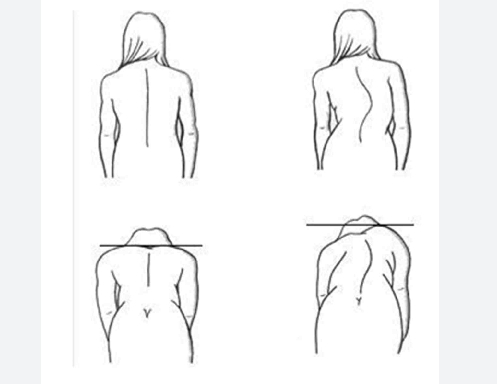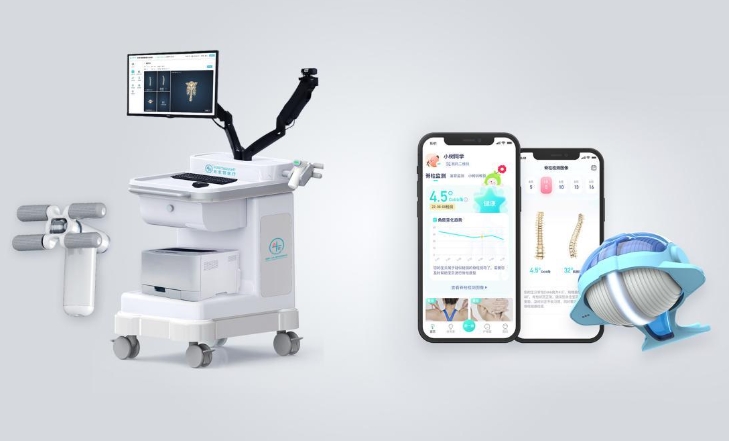Understanding Indications for Scoliosis Assessment
Scoliosis, a complex three-dimensional deformity of the spine, demands vigilant attention and timely intervention. As a condition that often develops subtly, scoliosis assessment plays a crucial role in early detection and management. Forethought explores the indications for scoliosis assessment, shedding light on the signs and risk factors that prompt healthcare professionals to delve deeper into spinal health. By understanding these indications, we can empower individuals, parents, and caregivers to recognize the importance of scoliosis screening and seek timely medical evaluation.
Defining Scoliosis:
Before delving into the indications for scoliosis assessment, let's briefly understand what scoliosis entails. Scoliosis is characterized by a lateral curvature of the spine, typically in the shape of an 'S' or 'C'. While there are various types of scoliosis, the focus here is primarily on adolescent idiopathic scoliosis, the most common form that emerges during the growth spurt of adolescence.
Indications for Scoliosis Assessment:
1. Visible Signs of Spinal Deformity:
One of the most apparent indications for scoliosis assessment is the presence of visible signs of spinal deformity. These signs may include:
a. Uneven Shoulder Height: A noticeable difference in shoulder height may be an early sign of spinal curvature.
b. Asymmetry in the Hips or Waist: Uneven hips or a prominent waist on one side may indicate a potential spinal issue.
c. Rib Hump: A visible rib hump, especially when bending forward, can be indicative of scoliosis.
Parents, teachers, and individuals themselves should be vigilant in observing these visual cues, as they often serve as the first indicators of potential spinal irregularities.
2. Screening Programs in Schools:
Scoliosis screening programs in schools are instrumental in identifying potential cases early on. Many educational institutions incorporate routine screenings, usually performed by trained healthcare professionals. The goal is to detect signs of scoliosis in its early stages when interventions may be more effective.
a. Age and Grade-Based Screenings: Screening programs often target specific age groups, commonly during early adolescence when scoliosis is more likely to manifest.
b. Notification and Follow-Up: Parents are typically notified if any signs of scoliosis are observed during school screenings, prompting further assessment by a healthcare provider.
3. Family History of Scoliosis:
A significant indication for scoliosis assessment is a family history of the condition. Genetic factors are believed to play a role in the development of scoliosis, and individuals with close relatives diagnosed with scoliosis may have an increased risk. Individuals with a family history of scoliosis should be monitored early and regularly, even in the absence of visible signs. Early detection is key in managing scoliosis effectively.
4. Back Pain or Discomfort:
While scoliosis itself may not always cause pain, some individuals with spinal curvature may experience back pain or discomfort, especially as the condition progresses. Individuals, particularly adolescents, reporting persistent back pain or discomfort should undergo a thorough assessment, including scoliosis screening. Pain may indicate not only the presence of scoliosis but also potential complications that need attention.
5. Changes in Posture and Gait:
Scoliosis can affect an individual's posture and gait, leading to observable changes that warrant further assessment.
Altered Posture:
Changes in the alignment of the spine may result in an altered posture, such as leaning to one side or having a tilted pelvis.
Walking Abnormalities:
Scoliosis can influence the way a person walks, leading to abnormalities in gait that may be noticeable during movement.
6. Puberty and Growth Spurts:
Adolescence, particularly during puberty and growth spurts, is a critical period for the onset and progression of scoliosis. The risk of scoliosis development increases during periods of rapid growth. Regular monitoring during these growth phases is essential for early detection.
7. Neurological Symptoms:
In some cases, scoliosis may be associated with underlying neurological conditions. Indications for scoliosis assessment may include: Presence of neurological symptoms, such as muscle weakness, numbness, or tingling, may prompt further investigation for underlying causes, including scoliosis.
8. Asymmetry Detected During Routine Physical Examinations:
Routine physical examinations conducted by healthcare professionals, including pediatricians and orthopedic specialists, may reveal asymmetries that signal the need for scoliosis assessment. During routine check-ups, healthcare providers assess shoulder and hip alignment to identify any signs of asymmetry. Any observed irregularities may prompt a referral for scoliosis assessment.

The Convenience and Innovation of Handheld Screening for Scoliosis - Forethought
In the ongoing efforts to prioritize early detection and intervention in spinal health, the Handheld Screening for Scoliosis emerges as a revolutionary and exceptionally convenient tool, particularly when it comes to mass screenings within school settings. This handheld device is designed to transform the landscape of scoliosis assessment, offering a practical and accessible solution for identifying spinal irregularities in a large number of students efficiently.
Non-Radiometric and Patient-Friendly Approach:
One of the hallmark features that sets the Handheld Screening for Scoliosis apart is its non-radiometric method. Traditionally, scoliosis assessments often involve X-rays, exposing individuals, especially growing adolescents, to ionizing radiation. In stark contrast, this handheld device employs innovative technology that eliminates the need for radiometric measurements. This not only ensures the safety of the screened individuals but also promotes a patient-friendly approach, particularly crucial in school settings where a diverse range of ages and health considerations are present.
Portability and Ease of Use:
The handheld nature of this screening tool adds a layer of portability and ease of use that is transformative in mass screening scenarios. Unlike traditional radiographic equipment, which may be cumbersome and require specialized settings, the handheld device allows healthcare professionals to conduct screenings with flexibility and efficiency. Its user-friendly design makes it accessible to a wide range of healthcare providers, including school nurses or visiting medical teams, contributing to the seamless integration of scoliosis screenings into the school health routine.
Smart Light Sensing Technology:
At the core of the Handheld Screening for Scoliosis is its innovative Smart Light Sensing Technology. This cutting-edge feature utilizes dynamic capture of small angular velocity changes using MEMS sensors (Micro-Electro-Mechanical Systems). The MEMS sensors enable real-time, precise measurement of spinal curvature without the need for traditional radiographic methods. This advanced technology not only enhances the accuracy of assessments but also streamlines the screening process, making it both efficient and effective.
Accurate Terrain Scanning Technology:
Another standout feature contributing to the convenience of mass screenings is the Accurate Terrain Scanning Technology integrated into the handheld device. This technology adapts to the speed and movements of the operator, ensuring the collection of the best terrain data for scoliosis assessment. The device intelligently adjusts its scanning parameters based on the operator's movements, allowing for a more personalized and reliable assessment of spinal curvature. The multi-level, multi-space information processing enhances the comprehensiveness of the data collected, contributing to the precision of the scoliosis screening results.
Simultaneous Acquisition of Orthopedic and Lateral Data:
Efficiency is further maximized through the device's capability for the simultaneous acquisition of orthopedic and lateral data. This real-time, dual-data acquisition enables a holistic view of the spine's alignment. The ability to capture both orthopedic and lateral data in one seamless process not only expedites the screening but also provides healthcare professionals with comprehensive insights, aiding in more informed decision-making.
Accessible Screening in School Settings:
The convenience of the Handheld Screening for Scoliosis extends beyond its technological features. Its portable and user-friendly design allows for screenings to be conducted directly within the school environment. This accessibility is a game-changer, as it eliminates the need for students to travel to external healthcare facilities for routine scoliosis screenings. The ability to bring the screening tool to schools facilitates a more inclusive and proactive approach to spinal health, ensuring that a larger population of students can benefit from regular assessments.
Empowering Early Intervention:
By facilitating mass screenings in schools, the Handheld Screening for Scoliosis becomes a powerful tool in empowering early intervention strategies. Early detection of scoliosis allows for timely monitoring and appropriate interventions if needed, potentially preventing the progression of spinal curvature and associated complications. The convenience of school-based screenings enhances the likelihood of reaching more students, fostering a culture of proactive spinal health awareness.
Recognizing the indications for scoliosis assessment is crucial in ensuring the early detection and effective management of this complex spinal condition. Whether through visible signs, school screenings, family history, or changes in posture and gait, understanding these indicators empowers individuals and healthcare professionals to take proactive steps in addressing scoliosis.
As we continue to emphasize the importance of scoliosis awareness, it is essential for parents, educators, and healthcare providers to collaborate in creating an environment where regular screenings and assessments become routine. By doing so, we can collectively work towards early intervention, improving outcomes, and promoting optimal spinal health for individuals at risk of scoliosis.

评论
发表评论